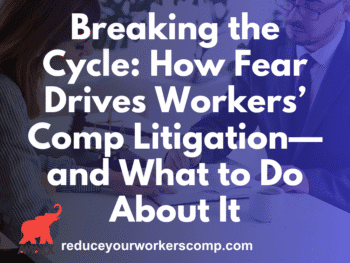New Jersey Teacher's Claim for Occupational Asthma Fails Due to Lack of Objective Evidence
Here's What Happened Thomas was employed by the school system from 1984 until 2000, initially as a substitute teacher and subsequently as a full-time teacher and staff developer. In 1974, at the age of thirty, she developed problems with asthma. From 1974 until 1987, Thomas stated her asthma "wasn't bad."
Sometime in 1987, Thomas began to have problem with her asthma. She stopped working in December 1999, attempted to come back to work a few months later, but was unable to finish even one complete day of work. Thomas indicated when she worked in certain parts of the school building, she noticed fumes that "smelled like gasoline or a furnace smell," that the ceilings in some rooms of the school building would occasionally leak, causing damage to some of the boxes in which she stored her belongings, that those rooms were "damp and moldy," and stated she was exposed to those areas approximately once a week. She also stated she generally felt better when not at work on the weekends
. Thomas' condition deteriorated rapidly after she left her employment in February 2000. In March, she was admitted to the intensive care unit of a local hospital. At the time of her workers' compensation hearing in 2007, she was taking eleven medications daily and using oxygen. She also weighed 255 pounds, having gained some 30 pounds after she stopped working.
The school building was inspected in June 2000. Increased levels of carbon dioxide were found, as was some evidence of water-damaged materials that could cause mold.
One expert, a pulmonary specialist, diagnosed Thomas with chronic occupational asthmatic bronchitis, and opined further she met the criteria for chronic obstructive pulmonary disease (COPD), resulting in a sixty-five percent total lung disability.
The expert indicated Thomas' exposure to numerous inhalants such as dirt, fumes, poor ventilation or in her classroom where she taught and other poor irritants that Thomas mentioned to him during the evaluation played a role in the development of her chronic airways disease.
The employer's pulmonary expert attributed Thomas' asthma problems with the normal aging process, with smoking by Thomas' spouse, with Thomas' obesity, and other factors not related to the employment.
The trial judge found Thomas' claims lacked credibility, that if her condition had been caused by her employment, her condition would have improved after her departure from the work force, that instead, her condition deteriorated, and that she had not met her burden of proof that her condition arose out of and in the course of her employment. (workersxzcompxzkit)
Here's How the Court Ruled In Thomas v. Newark Public Schs. Sys., 2009 N.J. Super. Unpub. LEXIS 1860 (July 16, 2009), the Superior Court of New Jersey, Appellate Division, affirmed. The appellate court agreed with the trial court that Thomas' expert had based his opinion totally on information supplied by Thomas, rather than on objective quantifiable evidence. There was no evidence as to the nature or extent of any inhalants in Thomas' work environment, other than Thomas' own subjective statements. The trial judge's acceptance of the opinion of the employer's expert was within the judge's discretion in determining the weight to be given the evidence. The appellate court reiterated that a decision in an occupational exposure case must be based on some objective quantifiable evidence. It could not be based on the claimant's subjective characterization of the workplace environment. See generally Larson's Workers' Compensation Law, §§ 52.03, 52.06.
Tom Robinson, J.D. is the primary upkeep writer for Larson's Workers' Compensation Law (LexisNexis) and Larson's Workers' Compensation, Desk Edition (LexisNexis). He is a contributing writer for California Compensation Cases (LexisNexis) and Benefits Review Board – Longshore Reporter(LexisNexis), and is a contributing author to New York Workers' Compensation Handbook(LexisNexis). Mr. Robinson is an authority in the area of workers' compensation and we are happy to have him as a Guest Contributor to Workers' Comp Kit Blog. Tom can be reached at: compwriter@gmail.com. http://law.lexisnexis.com/practiceareas/Workers-Compensation
Workers' Comp Kit Books & Guides: Corner.advisen.com/wcbooks View the Entire Blog: https://blog.reduceyourworkerscomp.com/ Do not use this information without independent verification. All state laws vary.
©2008 Amaxx Risk Solutions, Inc. All rights reserved under International Copyright Law. If you would like permission to reprint this material, contact Info@WorkersCompKit.com















